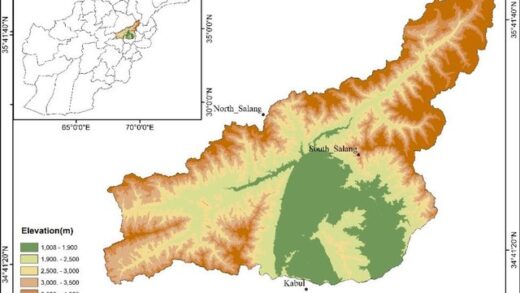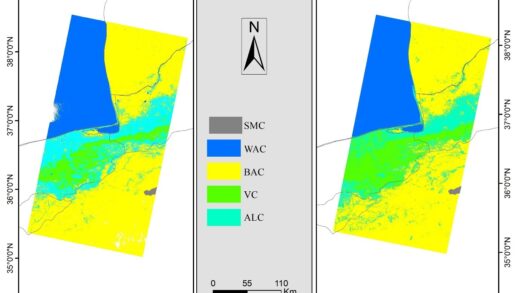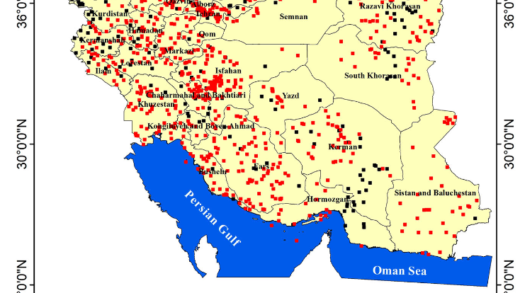کمیسازی اثر ساخت شهرک سبز بر دمای سطح زمین (مطالعه موردی: کاریزلند (کاریزبوم)، شهر یزد، ایران)
نویسندگان:
Mohammad Mansourmoghaddam, Negar Naghipur, Iman Rousta, Seyed Kazem Alavipanah, Haraldur Olafsson, Ashhad A. Ali

چکیده:
Several earth science investigations depend heavily on knowing the surface energy budget and determining surface temperature. The primary factor affecting the energy balance in the surface physical processes of the planet is the land surface temperature (LST). Even in the case of small-scale green areas like local parks, plants have a significant impact on the climate of cities. The goal of this study was to estimate the construction-related impacts of the Karizland green town (green belt) on the LST of its surroundings over time, for the years 2013 (before construction began), 2015, 2020 and 2022 (after construction was completed). LST values and hot spot analyses were employed for thermal condition evaluation purposes on Landsat-8 satellite images, and normalized difference vegetation index (NDVI) and fractional vegetation cover (FVC) indices were used for examining the vegetation change. The results showed that after the establishment of the green town, the mean NDVI and FVC grew by 275% and 950%, respectively, compared to the initial period, which resulted in the addition of approximately 208.35 ha of green space to the study area. In this regard, the results showed that after these changes, compared to the first period, the mean LST decreased by 8%. In addition, the area of the class of hotspot analysis with less than 90% confidence increased by 9%. The results illustrated that almost 20% of the data in the LST range was below 55 °C in 2013, near 57 °C in 2015, and around 51 °C in 2020 and 2022. The results also showed a negative relationship between the distance from the established settlement and the values of NDVI and FVC in 2022 of 91% and 89% and in 2020 of 67% and 69%, respectively. Every year, LST has had a significant negative relationship with the NDVI and FVC of that year and a positive relationship with the LST of the following years, such that the correlation decreases in later years. In order to control LST and the temperature surrounding cities, this research strongly advises managers to develop these green towns.






best generic cialis
best generic cialis